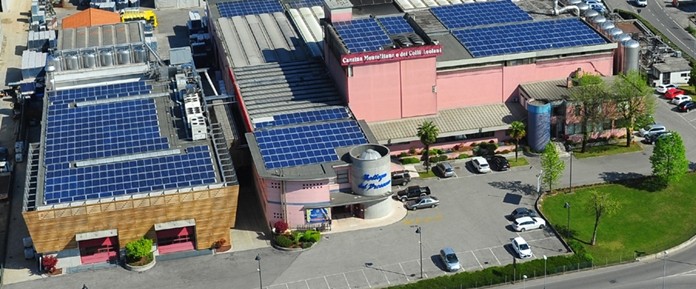
One of the enduring puzzles about Italian wine is that the name shown on the label can be one of four different things. It could be the name of the grape (e.g. Moscato), the name of the wine region (e.g. Chianti), the name of the town from which the wine comes (e.g. Bardolino) or in many cases, the name of the wine producer (e.g. Frescobaldi). But one wine springs to mind that is especially confusing in the nomenclature department. It’s Prosecco.
In the first place, Prosecco is the name of a style of wine. It’s often considered a cheap version of Champagne and indeed the taste profile shows a few broad similarities. But Prosecco is also a place. Many years ago it used to be a small village but has now been absorbed into the sprawling suburbs of Trieste and lies about 800 feet above the Mediterranean up in the extreme north east of Italy. Naturally, they make Prosecco wine there and have done so since the 16th century, but in more recent years the main production area for Prosecco has moved to a region about twenty miles north of Venice. The main town is Treviso.
Prosecco is also the name of the thin-skinned green grape that makes the wine. Or at least, it used to be until 2009 when the regional wine authority decided that the official name of the grape should be Glera, a name by which it had been known locally for generations. Today the wine is made in nine provinces in the Conegliano-Valdobbiandene region, a lush, green and hilly area where the best vineyards lie on the south-facing slopes. Although a small quantity of still wine is produced, Prosecco is nearly always sparkling or semi-sparkling.
You might wonder why Prosecco is invariably cheaper than Champagne, especially when they sometimes taste slightly similar. The reason lies in the bubbles – or rather how they’re made. Prosecco is made using the so-called Charmat Method which although invented by an Italian at the end of the 19th century, was further developed by the French inventor Eugène Charmat in 1907. This method is used all over the world to produce cheap brands of sparkling wine. In Treviso, it’s often known as the Metodo Italiano an expression that hardly needs translation.
The wine is blended and initially fermented using stainless steel pressure tanks in which the bubbles form during the second fermentation. This is less time-consuming (and therefore cheaper) than the more complicated and labour-intensive Champagne Method. Prosecco is often used as an apéritif but it’s surprisingly versatile and pairs successfully with a wide range of food. It works well with medium-intensity foods but can also matches the spicy curries and many other dishes of Southeast Asia.
Cornaro Prosecco Extra Dry DOC, Treviso, Italy (white) 644 THB @ Villa
This wine comes from the dauntingly named Cantina Montelliana e dei Colli Asolani, a cooperative of associated vine-growers founded in 1957. Its vineyards are located on the southern-facing hills around Montello and Colli Asolani several hundred feet above sea level. This example comes from the lower end of the price range though don’t let that put you off. Although it is one of the cheapest sparklers around, to my mind it’s jolly good value. The wine is a pale straw colour and has an attractive aroma of apple and peach. At just 11% ABV, it’s supple and light in body but quite an undemanding wine and not the kind of thing that requires elaborate descriptions. I’d describe it as a simple swigger and none the worse for that, because it would be ideal for social occasions or parties, if we are ever allowed to have them again.
Maschio Prosecco Extra Dry DOC, Treviso, Italy (white) 644 THB @ Villa
No, it’s not a typing error. The price of these two sparklers wines is exactly the same, though in England they cost about ten quid a bottle. Cantine Maschio is one of Italy’s top producers of quality Prosecco and makes some of the best-selling wines in Italy. This entry-level wine is almost colourless with subtle hints of green. There’s an interesting dusty floral aroma with the distinct smell of herbs and a hint of peaches. The wine is exceptionally light, dryish and refreshing with plenty of fruit of the palate and a pleasingly rounded taste with delicate acidity and lively bubbles. There’s also a surprisingly long finish and this charming little sparkler has a real touch of class. At just 11% ABV it would make a splendid aperitif, light and easy with not too much acidity.
Incidentally, if the label describes a sparkling wine as “extra dry” (which both these do) it’s not very dry at all. If you want a really dry sparkler, look for the word “Brut” on the label. Either way, Prosecco should always be served cold at around 3-6 °C which is pretty well out-of-the-fridge temperature. Most wine enthusiasts agree that sparkling wines should always be served in one of those tall, elongated tulip glasses, known technically as Champagne flutes. The shape helps preserve the bubbles for longer and it concentrates the wine’s fruity aromas at the top of the glass where your nose should be. Unless of course, you are some kind of alien being, with your nose in an unusual place.





